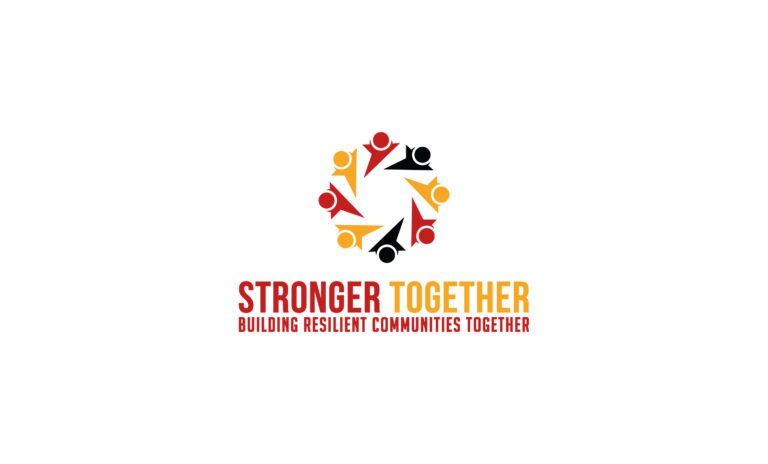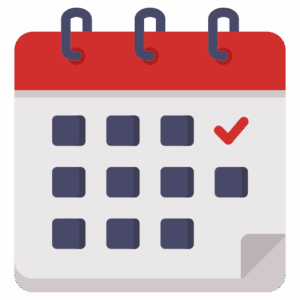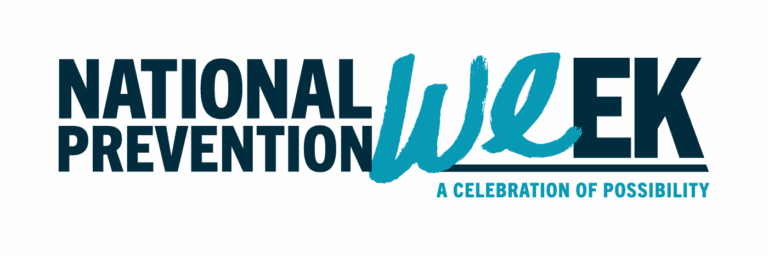
NEWSLETTER
May 2025
SUBSTANCE USE PREVENTION

This year’s event took place on February 27 th at the Georgia Freight Depot in
Atlanta, Georgia. There were approximately 380 youth and 150 adults. The youth
guest speaker was Sharmada Venkataranani. The keynote speaker was
Tony Hoffman.
SUICIDE PREVENTION

This year’s event took place on March 20 th at the Sloppy Floyd Building in
Atlanta, Georgia. There were approximately 350 youth and 100 adults. The youth
guest speaker was Nadia Thomas. The keynote speaker was Drew Robinson.
Advocacy
In 2025, the Georgia General Assembly convened on January 13th and adjourned on April 4th. This was the first session of the two-year legislative biennium. Bills that did not pass during this session will remain active and eligible for consideration during the next session in 2026. The legislative process involves a series of steps, including committee hearings, floor votes, and the Governor’s signature or veto.
Here is a summery of substance use and mental health related bills from the 2025 session provided by Jeff Breedlove.
SB 6 by Senator Kay Kirkpatrick authorizes the use of testing equipment to determine whether a controlled substance has been adulterated - PASSED GENERAL ASSEMBLY
SB 79 by Senator Russ Goodman – the Fentanyl Eradication and Removal Act or the FEAR Act. This bill would increase penalties of those who are convicted of trafficking fentanyl. A friendly amendment was made to this legislation that removed the language relating to penalties for individuals in possession of less than four grams of fentanyl - PASSED GENERAL ASSEMBLY
SB 132 by Senator Brian Strickland mandates a hearing before a court orders anevaluation of the mental competency of an accused person to stand trial - PASSED GENERAL ASSEMBLY
SB 233 by Senator Matt Brass relating to the Behavioral Health Reform and Innovation Commission to revise the subcommittees and to extend the repeal date. An Addiction Subcommittee was added to the Commission - PASSED GENERAL ASSEMBLY
HB 81 by Representative Bethany Ballard- Georgia would enter into an interstate compact for school psychologists - PASSED GENERAL ASSEMBLY
HB 89 by Representative Sharon Cooper requires healthcare providers, facilities, and pharmacies to provide the Maternal Mortality Review Committee with psychiatric or other clinical records - PASSED GENERAL ASSEMBLY
SB 33 by Senator Kay Kirkpatrick includes Delta 8 and other variants of THC in the total percentage of THC in hemp products and requires testing and labeling like Delta 9 - NEXT ACTION 2026
SB 277 by Senator Blake Tillery revising the definition of drugs to include alcohol and its derivatives - NEXT ACTION 2026
SB 371 by Senator Brian Strickland providing peer support for individuals within the criminal justice system -NEXT ACTION 2026
HB 34 by Representative Dale Washburn establishes professional licensing boards and continuing education tracking to monitor compliance of licenses with applicable continuing education requirements - NEXT ACTION 2026
HB 219 by Representative Ron Stephens establishes a professional health program to provide for monitoring and treatment for healthcare professionals with substance use disorders- NEXT ACTION 2026
HB 291 by Representative Darlene Taylor expands the healthcare workforce by certifying Community Healthcare Workers - NEXT ACTION 2026
HB 419 by Representative Lee Hawkins to facilitate Opioid Reversal Boxes on University System of Georgia and Technical College System of Georgia properties - NEXT ACTION 2026
HB 612 by Representative Katie Dempsey creating a Parity Compliance Review Panel to ensure compliance of the Georgia Parity Act - NEXT ACTION 2026
HB 657 by Representative Leesa Hagan to legally define an RCO to protect the integrity of community-based peer programs -NEXT ACTION 2026
Youth
Youth advocacy is an important youth development strategy to empower this creative, connected and passion driven generation. Youth advocacy can be a young person speaking on behalf themselves or their community to support a cause or purpose one believes in, makes recommendations and often times takes action. Adults can also be youth advocates, speaking and taking positive action on behalf of youth.
3 steps to becoming a youth advocate
Youth of America are purpose driven and motivated to act on causes they believe in. Their digital savviness translates to a generation of individuals who are adept researchers, and who know how to self-educate and dig deep for the information they seek. Youth today want to make their world a better place. Sixty percent want their jobs to positively impact society, while thirty six percent of sixteen- to nineteen-year-olds currently volunteer. An impressive seventy six percent are concerned about humanity’s impact on the planet. While youth have more access to information than they have ever had before, they do not always understand and interpret this information to make positive decisions without support from peers and caring adults.
So how can you support a young person in advocating for a cause they believe in? If you’re a young person, how do you start? Boys & Girls Clubs of America has developed a process for youth who want to become advocates and champion for change: Think, Learn and Create Change. This approach puts youth at the center of their own advocacy experiences and supports their ongoing, active engagement as change makers.
- Community based: A specific passion, issue or need in one’s own local community- an example could be the need for a local abandoned lot to be built into a park to support neighborhood schools.
- Identity based: A specific passion, issue or need related to one’s identity or population- an example could be LGBTQ rights.
- Globally based: A specific passion, issue or need facing more than one local community- an example could be the need for more creative recycling opportunities.
- Find out what drives your youth by asking questions like:
- What is an issue youth are facing today that you really care about?
- What is something happening in your community that you would like to contribute to or see change?
- Why do you really care about it and what do you know about it?
- Know your domains. Every website has to register a domain that indicates what kind of agency it is. The most common are “.com” (businesses that profit from their sites), “.net” (networks that are often private), “.org” (nonprofits such as Common-Sense Media that don’t profit from their sites), “.gov” (government sites that are obligated to publish public information), and “.edu” (university sites that publish peer-reviewed studies). All of these can provide information for your research, but in general, “.gov” and “.edu” sites will offer objective data based on research.
- Google and Wikipedia. These aren’t necessarily poor sources, but they need to be cross-referenced. And they’re not enough to fully understand the issue or topic you’re interested in. On a Wikipedia article, scroll to the “Sources” and “External Links” sections to get links.
- The library. Your local librarian is trained to help you find the best resources on your topic.
- Meta search engines. Google Scholar (a free search engine that indexes scholarly literature such as academic papers) and Gale and LexisNexis Academic (both subscription-based services available at libraries and other institutions) search a huge range of topics for print and web articles, academic papers, and even multimedia sources.
- Grandparents, historians, longtime neighborhood residents, and the like can be great sources of (not always entirely accurate but usually colorful) information.
- Book-report books, biographies, science books, and nonfiction books all are great sources for learning reliable data.
- Observation – going out to observe the problem/need first-hand
- Interview – talking one-on-one or in small groups with people affected by the problem/need
- Survey – distributing a series of questions to people directly affected or involved
- Focus groups – talking in a group with people of different races, genders, ages, or physical abilities
Once youth identify what issue or cause they want to take action towards and learn some facts about that topic, it is time to identify what type of action and how to move forward. Consider the following examples of taking action:
- Service Projects and Initiatives – time bound, specific projects
- Event Based Action – marches or rallies
- Entrepreneurship Ventures – developing a business to serve a need
- Political Engagement – campaigns, connecting with elected officials, creating new policies
- Identify the type of action/activity—one that directly meets the needs, supports the need, or advocates to address it
- Goal—the goal you hope your action/activity will achieve
- Location—the specific location where the action/activity will take place
- Description—what the action/activity will look like and its key elements
- Date and Time—when the action/activity will take place
- Partners—groups and organizations to partner with or inform of the action/activity
- Resources– what resources may be needed for the specific action/activity
V4P Free Membership
To become a member with V4P is free. Membership includes exclusive webinars, networking opportunities, and much more. You can also be involved with V4P events via our social media accounts. Our social media handle on Instagram is @V4PGA. So, click that button below and be a part of the V4PGA experience!
Calendar of Prevention Events
- May – Mental Health Month
- May 11 – 17 National Prevention week
- May 22 – V4P member networking @ 2 pm
- June 9 – 13 Georgia Teen Institute
- June 9 – 11 Let’s Connect Summit – Savannah
- June 17 – V4P member webinar @ 2 pm
- July 21 – 24 CADCA midyear
- August 25 – 28 Georgia School of Addiction Studies

INSPIRATIONAL THOUGHT

Mindset Shift
If it’s meant to be, it will be
Everything happens for you
You wanting a sign is a sign
Your biggest asset is your mindset
‘May it be this or something better’
Your life is rooted in your daily habits
All love should feel calm, easy, and safe
Anything meant for you, will never leave
If it’s important enough, you will find a way
Change your thoughts, you’ll change your life
Obstacles are detours in the right direction
What you desire was planted inside of you for a reason
Be more vulnerable to ignite real connections
Let today be today and tomorrow be tomorrow

National Prevention Week is a public education platform showcasing the work of communities and organizations across the country that are preventing substance use and promoting positive mental health.
V4P would love to hear from you. Please tell us about any events that you participated in during NPW. Feel free to highlight any campaigns or activities focused on youth.
